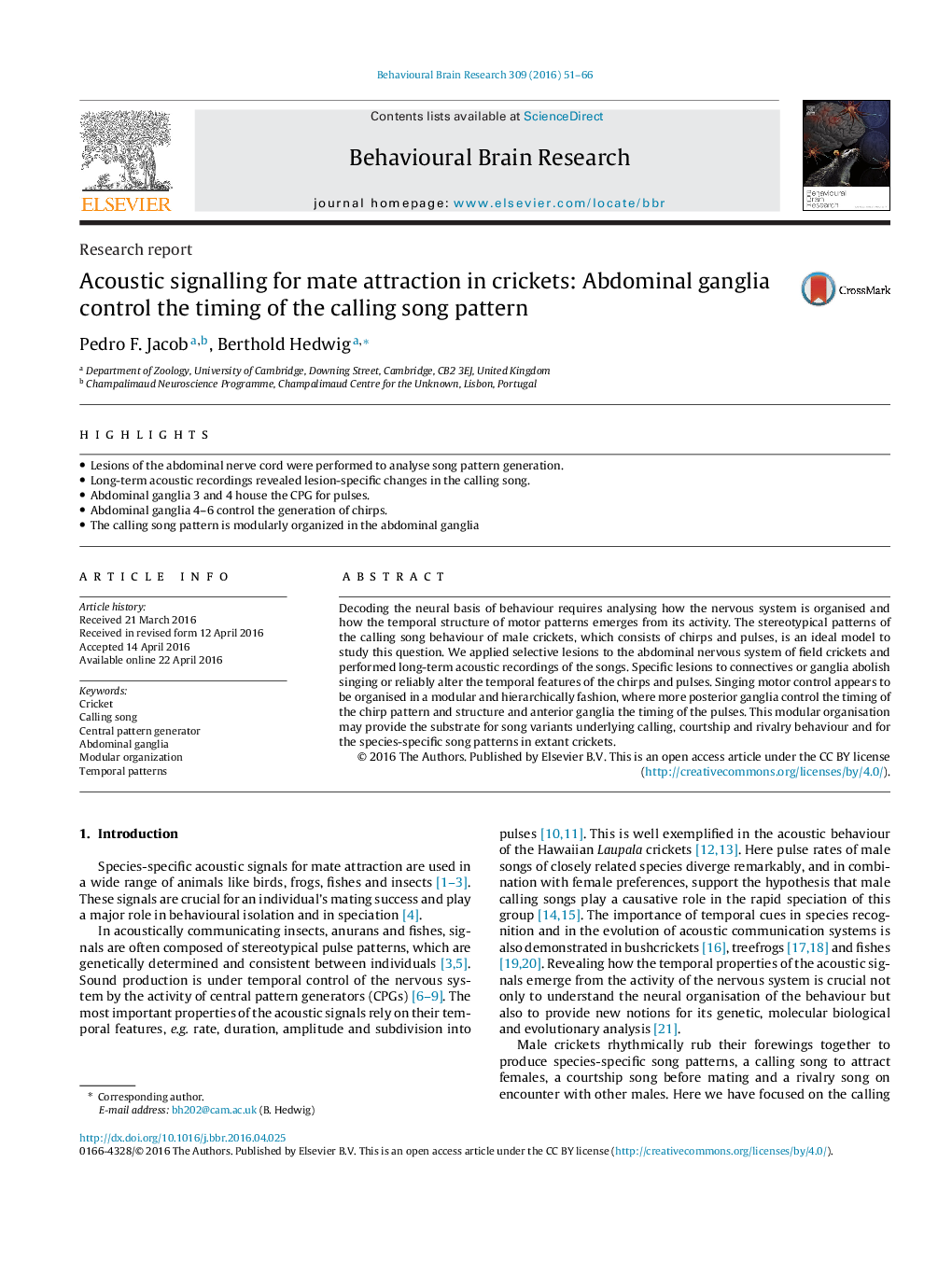| Article ID | Journal | Published Year | Pages | File Type |
|---|---|---|---|---|
| 6256126 | Behavioural Brain Research | 2016 | 16 Pages |
â¢Lesions of the abdominal nerve cord were performed to analyse song pattern generation.â¢Long-term acoustic recordings revealed lesion-specific changes in the calling song.â¢Abdominal ganglia 3 and 4 house the CPG for pulses.â¢Abdominal ganglia 4-6 control the generation of chirps.â¢The calling song pattern is modularly organized in the abdominal ganglia
Decoding the neural basis of behaviour requires analysing how the nervous system is organised and how the temporal structure of motor patterns emerges from its activity. The stereotypical patterns of the calling song behaviour of male crickets, which consists of chirps and pulses, is an ideal model to study this question. We applied selective lesions to the abdominal nervous system of field crickets and performed long-term acoustic recordings of the songs. Specific lesions to connectives or ganglia abolish singing or reliably alter the temporal features of the chirps and pulses. Singing motor control appears to be organised in a modular and hierarchically fashion, where more posterior ganglia control the timing of the chirp pattern and structure and anterior ganglia the timing of the pulses. This modular organisation may provide the substrate for song variants underlying calling, courtship and rivalry behaviour and for the species-specific song patterns in extant crickets.
